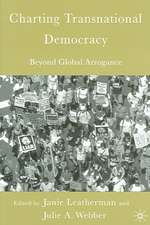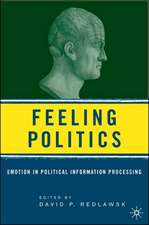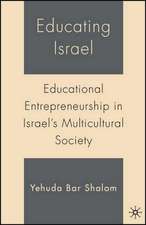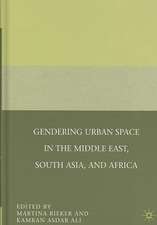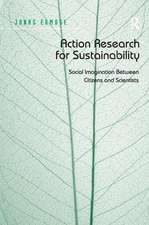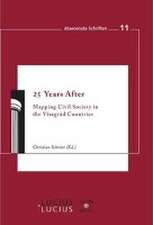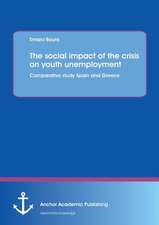Bones, Rocks and Stars: The Science of When Things Happened: Macmillan Science
Autor C. Turneyen Limba Engleză Paperback – 13 iun 2006
Din seria Macmillan Science
-
 Preț: 143.08 lei
Preț: 143.08 lei - 8%
 Preț: 444.97 lei
Preț: 444.97 lei -
 Preț: 298.22 lei
Preț: 298.22 lei -
 Preț: 206.51 lei
Preț: 206.51 lei - 5%
 Preț: 132.99 lei
Preț: 132.99 lei -
 Preț: 179.45 lei
Preț: 179.45 lei -
 Preț: 331.00 lei
Preț: 331.00 lei -
 Preț: 144.97 lei
Preț: 144.97 lei -
 Preț: 155.66 lei
Preț: 155.66 lei -
 Preț: 148.58 lei
Preț: 148.58 lei -
 Preț: 291.22 lei
Preț: 291.22 lei -
 Preț: 106.59 lei
Preț: 106.59 lei -
 Preț: 223.23 lei
Preț: 223.23 lei -
 Preț: 111.33 lei
Preț: 111.33 lei -
 Preț: 84.19 lei
Preț: 84.19 lei -
 Preț: 104.13 lei
Preț: 104.13 lei -
 Preț: 103.83 lei
Preț: 103.83 lei -
 Preț: 383.50 lei
Preț: 383.50 lei -
 Preț: 377.18 lei
Preț: 377.18 lei -
 Preț: 220.33 lei
Preț: 220.33 lei -
 Preț: 317.52 lei
Preț: 317.52 lei -
 Preț: 331.16 lei
Preț: 331.16 lei -
 Preț: 316.53 lei
Preț: 316.53 lei -
 Preț: 353.02 lei
Preț: 353.02 lei -
 Preț: 202.26 lei
Preț: 202.26 lei -
 Preț: 386.61 lei
Preț: 386.61 lei -
 Preț: 385.84 lei
Preț: 385.84 lei - 5%
 Preț: 368.37 lei
Preț: 368.37 lei -
 Preț: 383.93 lei
Preț: 383.93 lei - 15%
 Preț: 694.04 lei
Preț: 694.04 lei -
 Preț: 107.59 lei
Preț: 107.59 lei -
 Preț: 204.11 lei
Preț: 204.11 lei -
 Preț: 102.44 lei
Preț: 102.44 lei -
 Preț: 133.12 lei
Preț: 133.12 lei
Preț: 145.13 lei
Nou
Puncte Express: 218
Preț estimativ în valută:
27.77€ • 28.99$ • 22.98£
27.77€ • 28.99$ • 22.98£
Carte disponibilă
Livrare economică 14-28 martie
Preluare comenzi: 021 569.72.76
Specificații
ISBN-13: 9780230551947
ISBN-10: 0230551947
Pagini: 200
Ilustrații: XI, 188 p.
Dimensiuni: 127 x 203 x 13 mm
Greutate: 0.27 kg
Ediția:Revizuită
Editura: Palgrave Macmillan US
Colecția Palgrave Macmillan
Seria Macmillan Science
Locul publicării:New York, United States
ISBN-10: 0230551947
Pagini: 200
Ilustrații: XI, 188 p.
Dimensiuni: 127 x 203 x 13 mm
Greutate: 0.27 kg
Ediția:Revizuită
Editura: Palgrave Macmillan US
Colecția Palgrave Macmillan
Seria Macmillan Science
Locul publicării:New York, United States
Cuprins
List of Figures and Tables List of Permissions and Figure Sources Acknowledgements Introduction The Ever-changing Calendar A hero in a dark age The Forged Cloth of Turin The Pyramids and the Bear's Groin The Volcano that Shook Europe The Mandate from Heaven The Coming of the Ice The Lost Worlds And Then there was One The Hole in the Ground Towards the Limits of Time Epilogue: Time's up for Creationism Further Reading Index
Recenzii
'A fabulous, entertainingly written account of the amazing science
behind calendars, dates and dating objects. Essential reading for anyone
interested in prehistory.' - Professor Tim Flannery, Director of the South Australian Museum
'A rollicking run through the story of telling the time - lively and well-researched, with many fascinating stories.' - Professor Michael Benton, author of When Life Nearly Died
'This delightful introduction successfully fuses history, prehistory and earth science. It captures the imagination from its first page, and then takes the reader on a fun and fact-filled world tour through the past.' - Professor Tim White, University of California at Berkeley, USA
'What I like best about the book: It's a scientist clearly explaining what he does for a living and why it is important, at a level that any literate person can understand. Not an easy accomplishment.' - scienceblogs.com/pharyngula
'Absorbing - will appeal to a wide audience, particularly those who got a kick out of Blink or Freakonomics.' - Publishers Weekly
'If you like detective stories, you'll love this book. With a passion that radiates from every page, geologist Chris Turney, who did the radiocarbon dating on the 'hobbit' human fossil recently discovered in Indonesia, reveals how scientific dating techniques have helped solve the biggest mysteries of all time. What really happened to the dinosaurs? How old is the universe? Why did giant kangaroos die out? When did early Homo sapiens sweep aside the Neanderthals in the Middle East? What caused the ice ages? Turney explains how trees, amino acids, carbon, luminescence, volcanic ash, stars and even pollen can all give objects or events an exact place in history. The book is easy to understand and it should satisfy the hungriest of infovores.' - New Scientist
'5/5: a book that tackles [these] issues is welcome indeed - that it succeeds so brilliantly is awonderful surprise.' - Peter Andrews of the Natural History Museum, BBC Focus Magazine
'Well researched and covers a lot of ground in a splendidly personal style. Highly recommended' - Quaternary Australasia
'A fascinating guide to the measurement of time' - Chemistry World
'The value of Chris Turney's Bones, Rocks and Stars: The Science of When Things Happened is that it provides a concise, simple, readable introduction to the full range of dating techniques...Altogether a very useful little book.' - Current World Archaeology
behind calendars, dates and dating objects. Essential reading for anyone
interested in prehistory.' - Professor Tim Flannery, Director of the South Australian Museum
'A rollicking run through the story of telling the time - lively and well-researched, with many fascinating stories.' - Professor Michael Benton, author of When Life Nearly Died
'This delightful introduction successfully fuses history, prehistory and earth science. It captures the imagination from its first page, and then takes the reader on a fun and fact-filled world tour through the past.' - Professor Tim White, University of California at Berkeley, USA
'What I like best about the book: It's a scientist clearly explaining what he does for a living and why it is important, at a level that any literate person can understand. Not an easy accomplishment.' - scienceblogs.com/pharyngula
'Absorbing - will appeal to a wide audience, particularly those who got a kick out of Blink or Freakonomics.' - Publishers Weekly
'If you like detective stories, you'll love this book. With a passion that radiates from every page, geologist Chris Turney, who did the radiocarbon dating on the 'hobbit' human fossil recently discovered in Indonesia, reveals how scientific dating techniques have helped solve the biggest mysteries of all time. What really happened to the dinosaurs? How old is the universe? Why did giant kangaroos die out? When did early Homo sapiens sweep aside the Neanderthals in the Middle East? What caused the ice ages? Turney explains how trees, amino acids, carbon, luminescence, volcanic ash, stars and even pollen can all give objects or events an exact place in history. The book is easy to understand and it should satisfy the hungriest of infovores.' - New Scientist
'5/5: a book that tackles [these] issues is welcome indeed - that it succeeds so brilliantly is awonderful surprise.' - Peter Andrews of the Natural History Museum, BBC Focus Magazine
'Well researched and covers a lot of ground in a splendidly personal style. Highly recommended' - Quaternary Australasia
'A fascinating guide to the measurement of time' - Chemistry World
'The value of Chris Turney's Bones, Rocks and Stars: The Science of When Things Happened is that it provides a concise, simple, readable introduction to the full range of dating techniques...Altogether a very useful little book.' - Current World Archaeology
Notă biografică
CHRIS TURNEY is a British Geologist based at the University of Exeter. He did the radiocarbon dating on the 'Hobbit' fossil of Flores, Indonesia, that hit the headlines worldwide. He has published numerous scientific papers and magazine articles and done many media interviews thanks to his infectious enthusiasm for working out what happened when. In 2007, Chris was awarded The Sir Nicholas Shackleton Medal for outstanding young Quaternary scientist for his pioneering research on past climate change and dating the past.






